Hi, I'm Frisela Skendaj,
An Electrical and Electronics Engineer with integrated masters. With 2 years of hands-on laboratory experience, 1 year of academic teaching and a passion for interesting and complex projects, I'm excited to showcase my skills and advance my career in the field of engineering and research.
Location: London, U.K.
Phone: +44 790 908 0198
Email: frisa.skd@gmail.com
Degree: MEng - First-Class (Honours)
Age: 25
Birthday: 2 August, 2000
Skills
Explore my diverse skill-set in Electrical and Electronics Engineering, encompassing areas such as circuit design, programming, troubleshooting, and project management. I bring a strong foundation in both theory and practical application to every endeavor.
Microcontrollers
ESP32, Arduino, 8-bit ATmega2560
(Embedded) Programming
C/C++, Assembly, MySQL
MATLAB
Coding, Simulink, Neural Network Training, Fuzzy Logic Toolbox
Robotics & Electronic Circuits
Electronic Components, Soldering, Oscilloscopes, Multimeters
Control Systems
PID, Fuzzy Logic
AI Algorithms
Linear Regression, Perceptrons, MLPs, RBFs, Pattern Recognition
Probabilities, Statistics & Data Analysis
Probability Theory, NHST, Z-Tests, T-Tests, Sign-Test, Sign-Rank Test, Rank-Sum Test, Pearson & Sperman, 1-tailed & 2-tailed Tests, Linear & Non-Linear Regression
Teaching / Tutoring
Mathematics & Physics, Electrical & Electronics Engineering Modules, Final Project/Dissertation Supervision, KPIs, Marking/Grading
Reporting & Data Representation
MS Office, Origin
AutoCAD
2D Architectural Drawings, Electrical Layouts
Projects
Electrical & Electronics Engineering:

Development of a Biomedical Device with Printed Electronics
Flexible Electronics
ESP32
C/C++
Screen-Printing
Electronic Circuit Design
IoT
Development of a prototype flexible skin-temperature sensor with printed electronics, an ESP32 MCU and a user-friendly wireless interface. The device was implemented using screen-printing technology with thermochromic inks, carbon, and silver materials, designed as a preventive tool for heatstroke and skin cancer.
Read More
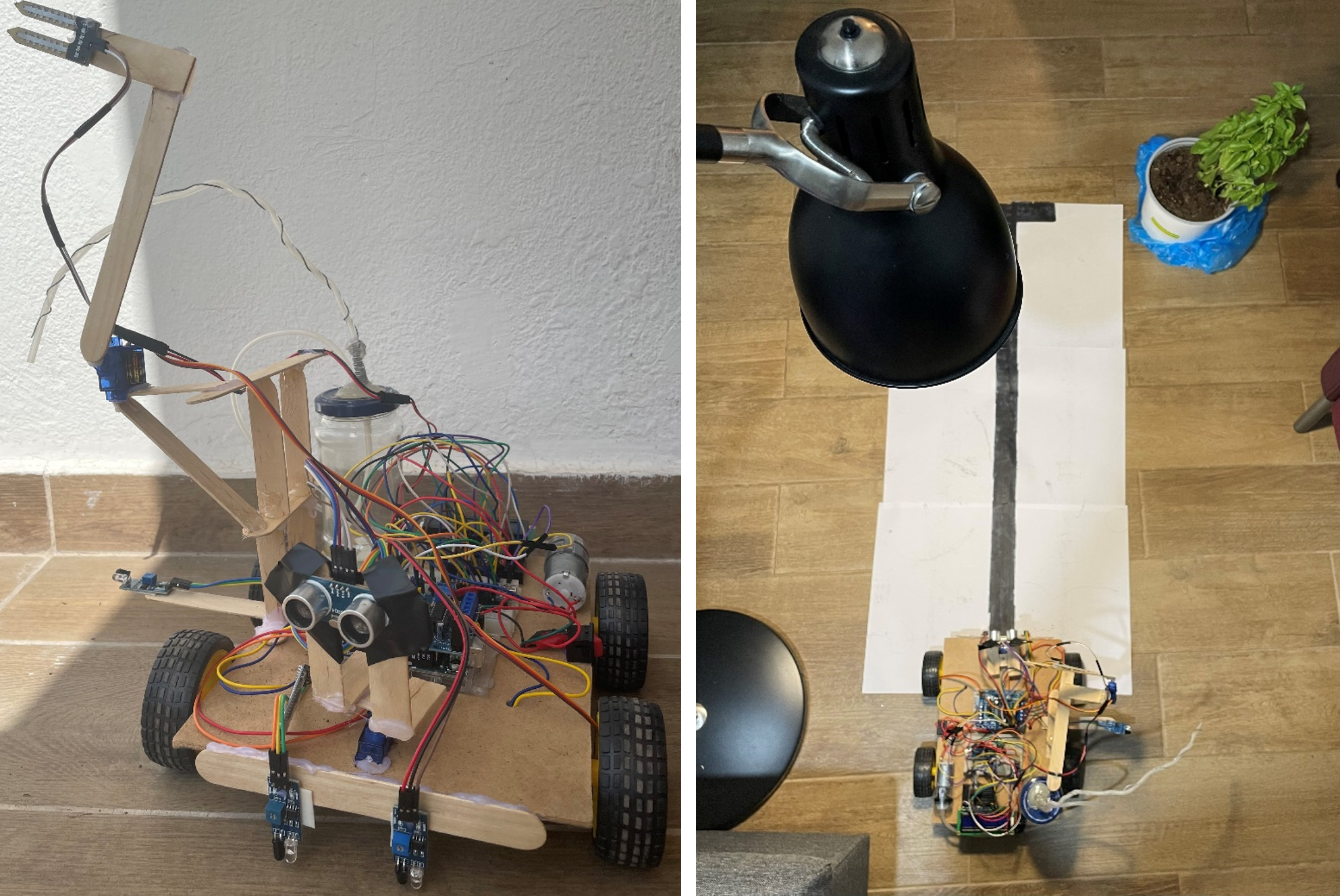
Robotic Vehicle with Automatic Watering Plant System
C/C++
Arduino UNO & Nano
Robotics
Electronic Circuits
This robotic vehicle uses sensors for autonomous navigation, flowerpot detection, and soil moisture monitoring, activating the plant watering system when needed. An LCD displays real-time moisture levels, and a Bluetooth mobile app allows manual control for the robot's movement and plant watering. Combining autonomous and manual modes, the system offers a flexible and efficient solution for automated plant care.
Read More

Development of a Detection System
C/C++
Arduino UNO
MATLAB Simulink
Electronic Circuits
This project involves developing an object detection system using Arduino and Simulink (MATLAB). It integrates hardware and software to detect objects within 10 cm, controlling a servo motor and a LED to execute specific actions. This system offers hands-on experience in hardware programming and serves as a foundation for security applications, showcasing its adaptability for real-world use.
Read More
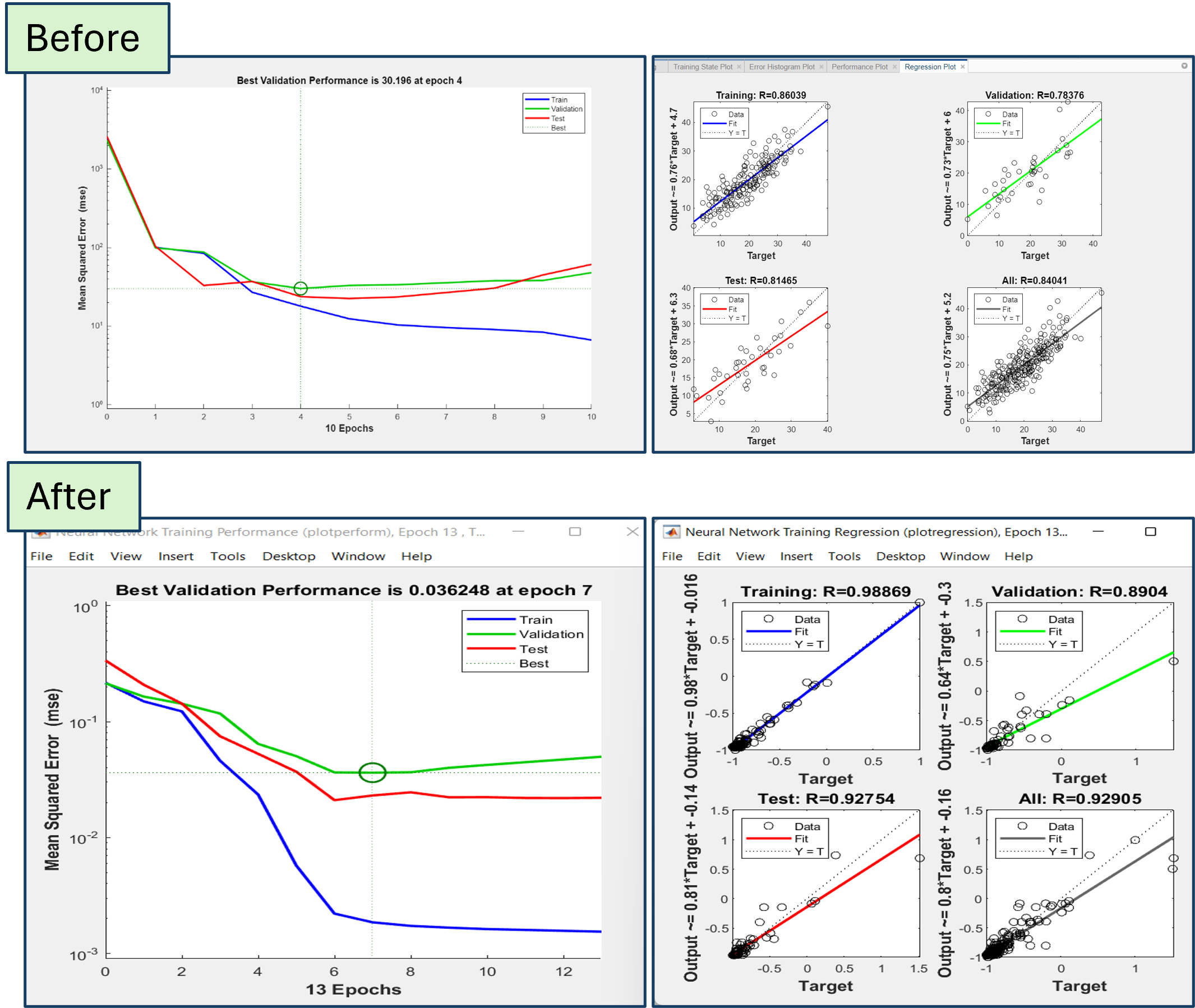
MLP Models for CPU Performance Prediction
MATLAB Coding
Neural Network Training
Linear Regression
MLPs
This project explores the use of Multilayer Perceptrons (MLPs) to predict CPU performance based on system characteristics. Using MATLAB programming and the MATLAB's Neural Network Training tool, the study highlights the advantages of MLPs in capturing non-linear relationships compared to linear models. Key findings reveal that increased RAM consistently improves performance, while cache memory effects are more complex. This study talks about backpropagation through training, validation, and testing of the model and the practical applications of MLPs in performance prediction.
Read More
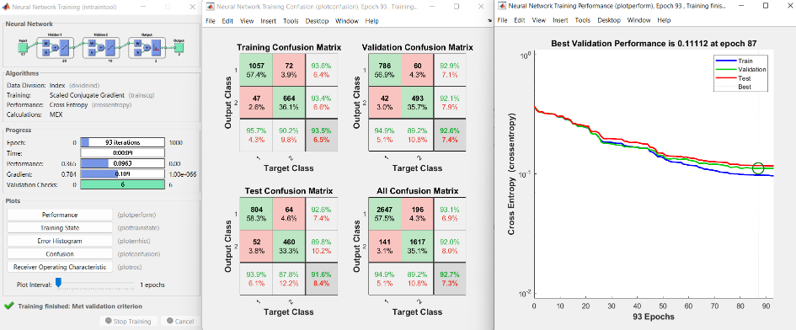
Spam Email Detection System with MLP Neural Networks
MATLAB Coding
Neural Network Training
Pattern Recognition
MLPs
This project involves the design and implementation of a spam email detection system using a Multilayer Perceptron (MLP) neural network. By analyzing email characteristics, the system classifies emails as spam or not spam, achieving validation and testing accuracies of 92.4% and 91.8%, respectively. The study demonstrates the effectiveness of MLPs in Pattern Recognition and the importance of robust data preprocessing and evaluation techniques.
Read More
Bioengineering, Statistics & Data Analysis:
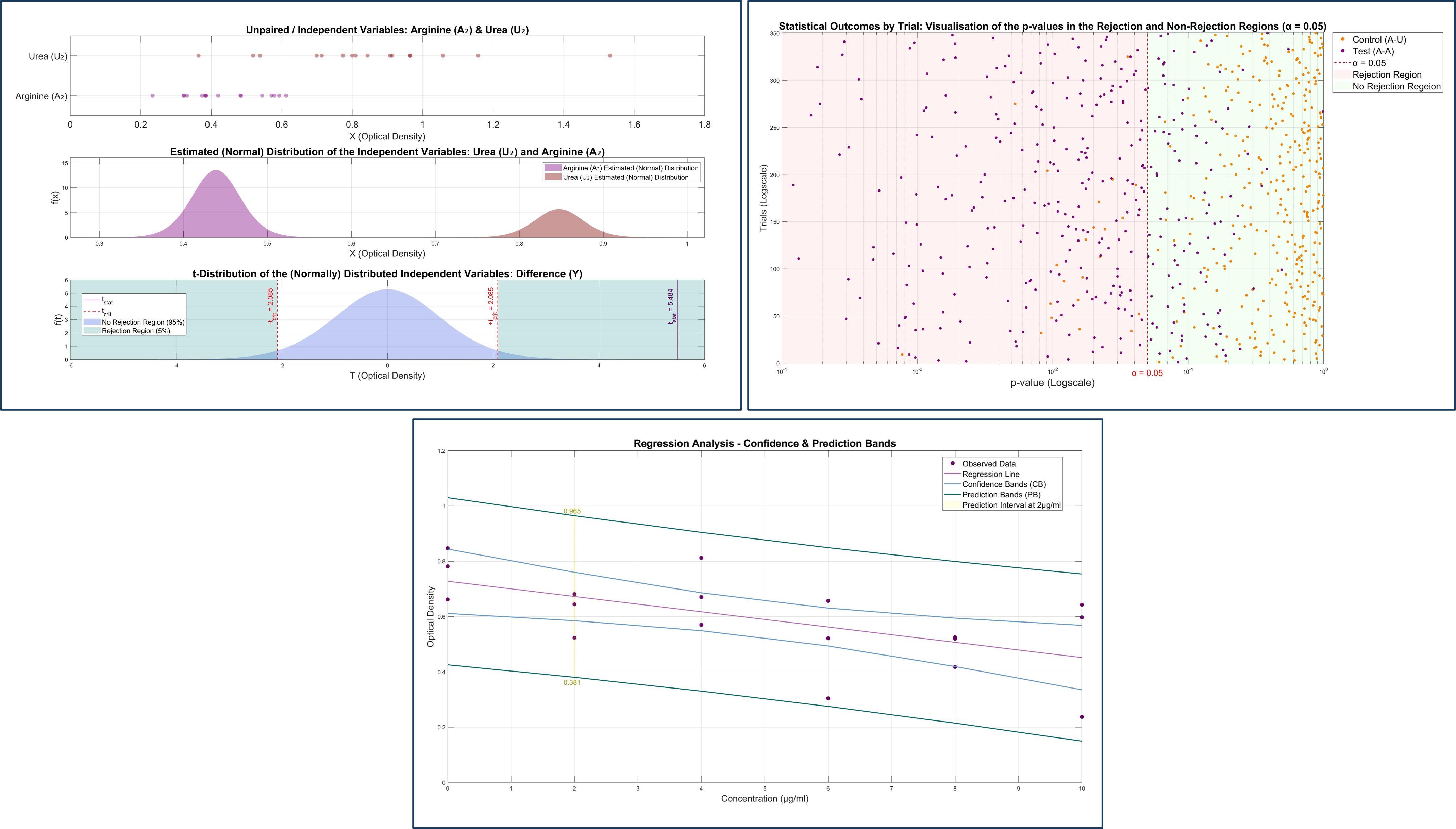
Statistical Analysis of Bacterial Growth Dynamics
MATLAB Coding
Statistics
Data Analysis
T-Test
Rank-Sum Test
Pearson Test
Power Analysis
Linear Regression
This project analyses the effects of arginine and urea on bacterial growth using MATLAB-generated data and statistical tests, including t-tests, a Rank-Sum test, and regression analysis. The study found significant differences in growth, with antibiotics inhibiting bacterial proliferation. Power analysis emphasized the importance of larger sample sizes for sensitivity. The regression model offered predictive insights into bacterial growth trends, showcasing the importance of statistical methods in optimizing experimental outcomes.
Read More

Modelling and Analysis of Blood Viscosity for Biofluid Dynamics in Capillary Systems
MATLAB Coding
(Bio) Fluid Mechanics
Newtonian & Non-Newtonian Fluids
Power Law Model
Bingham Plastic Model
Casson Model
Weissenberg-Rabinowitsch (WR) Approach
This project investigates blood viscosity characterisation using non-Newtonian models and capillary rheometry data. It demonstrates how haematocrit levels affect viscosity and yield stress, with the Casson model and the Weissenberg-Rabinowitsch (WR) computational approach demonstrating the highest accuracy at higher concentrations, due to the model’s ability to capture shear-thinning behaviour. This study highlights the practical application of advanced rheological models in understanding blood flow dynamics, with implications for medical research and clinical diagnostics.
Read More
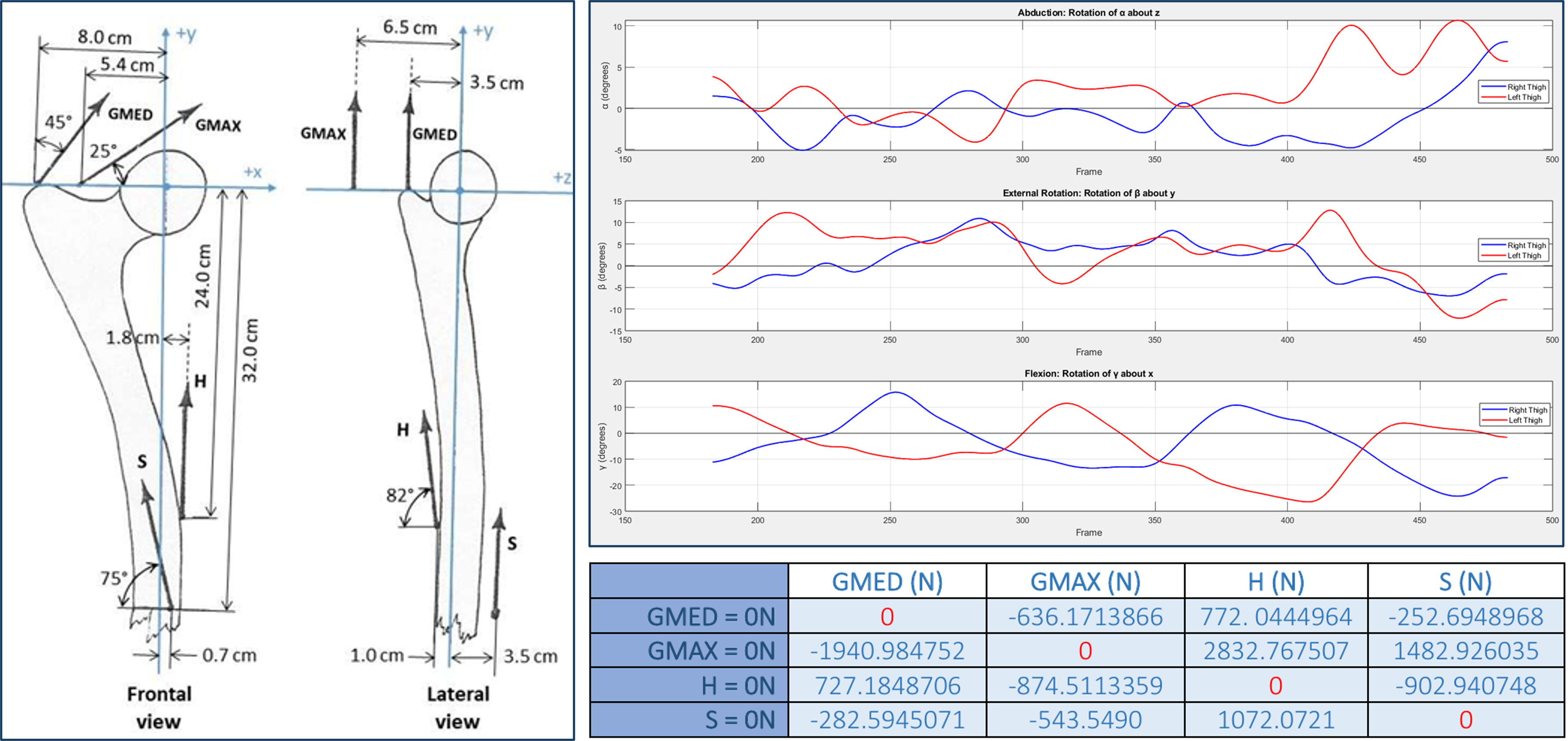
Human Movement Analysis: Gait and Muscle Force Dynamics
MATLAB Coding
Solid (Bio)Mechanics
Kinematics
Kinetics
Euler Rotation Angular Analysis
Muscle Forces
Gait Cycle Patterns
This project analyses human gait through kinematic and kinetic methods using MATLAB and 3D motion capture data. Ground reaction forces indicated asymmetric loading phases during foot contact. Transformation matrices and Euler rotations calculated intersegmental hip angles, showing cyclic patterns typical of gait mechanics. Muscle force contributions were also estimated by solving moment balance equations, identifying the gluteus maximus as the least involved during the task. This study highlights the importance of accurate modelling and data interpretation for biomechanical applications in predicting movement patterns and muscle contributions for gait assessment and rehabilitation.
Read More
Publications
Selected publications to International Conferences.
Papers Submitted in Scientific Conferences:
[1] Frisela Skendaj, Maria-Amalia Mesiri, Guillermo Enrique De la Cruz Karnavas, Aggelos Pilatis, Dimitris Barmpakos, Apostolos Apostolakis, Dimitrios N. Pagonis, Grigorios Kaltsas (2023). Optical Temperature Detection Using Screen-Printed Thermochromic Inks. Micro Nano 10th International Conference, 2-5 Nov. 2023, Athens, Greece.
View Publication[2] Aggelos Pilatis, Guillermo Enrique De la Cruz Karnavas, Frisela Skendaj, Dimitrios N. Pagonis, and Grigoris Kaltsas (2022). Temperature and Strain evaluation of screen-printed Ag and Carbon-based inks on flexible substrates. Micro Nano 9th International Conference, 4-5 Nov. 2022, Xanthi, Greece.
View PublicationPosters Submitted in Scientific Conferences:
[1] Frisela Skendaj, Maria-Amalia Mesiri, Guillermo Enrique De la Cruz Karnavas, Aggelos Pilatis, Dimitris Barmpakos, Apostolos Apostolakis, Dimitrios N. Pagonis, Grigorios Kaltsas (2023). Optical Temperature Detection Using Screen-Printed Thermochromic Inks. Micro Nano 10th International Conference, 2-5 Nov. 2023, Athens, Greece.
View Publication[2] Aggelos Pilatis, Frisela Skendaj, Mesiri Marilia, De la Cruz Guillermo, Dimitris Barmpakos, Apostolos Apostolakis, Dimitrios-Nikolaos Pagonis, Grigoris Kaltsas (2023). Optical temperature sensing using thermochromic inks – A fully printed approach. 16th International Symposium on Flexible Organic Electronics (ISFOE23), 3-6 Jul. 2023, Thessaloniki, Greece.
View PublicationContact Me
Linked In
linkedin.com/in/frisela-skendajMy Resume
Frisela Skendaj (PDF)E-mail Address
frisa.skd@gmail.comPhone Number
+44 790 908 0198
Location
London, U.K.